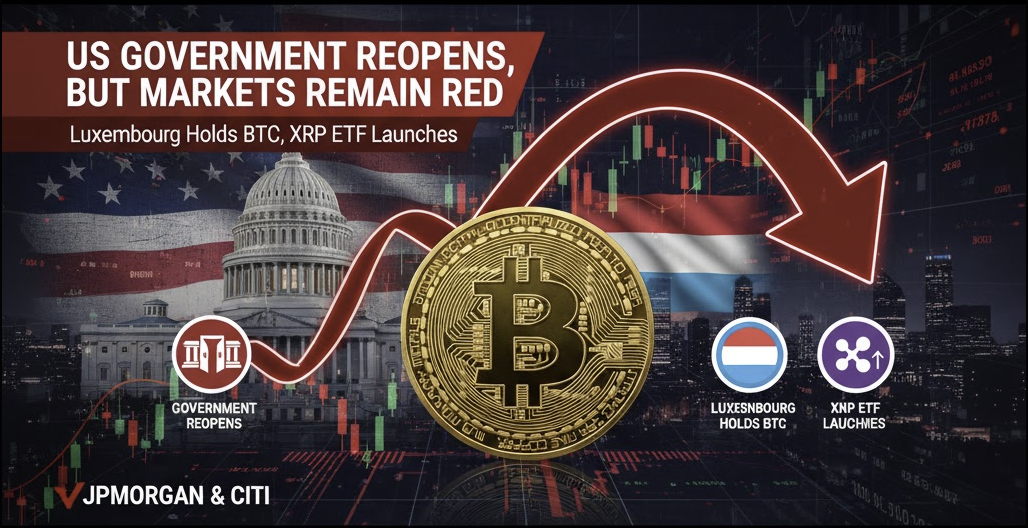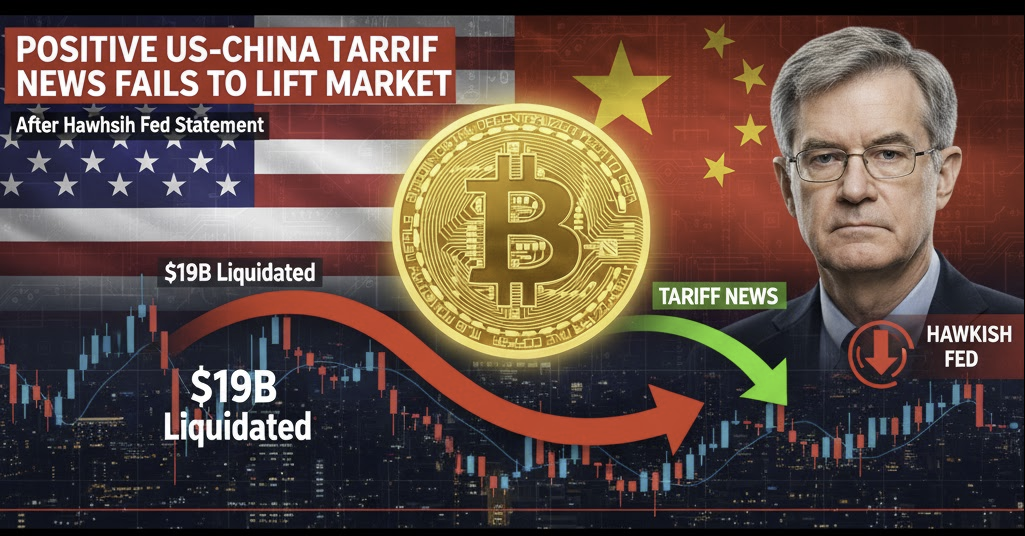Chainlink continuously announces partnerships with traditional finance giants like JPMorgan, SWIFT, and UBS, yet its token price struggles to break out. Why?
Beyond the Oracle: Chainlink’s New Global Role
Like many major projects in the crypto market, Chainlink hosts its own event, SmartCon, to share its strategic direction and vision for the coming year. What sets it apart is that while most DeFi protocols are downsizing or awaiting a new growth wave, Chainlink is doing the opposite: expanding its partnerships with major financial institutions like SWIFT, JPMorgan, UBS, ANZ, and the Central Bank of Brazil. According to statistics shared at the event, the Chainlink network has processed over $26.4 trillion in transactional value, a figure equivalent to Visa's transaction volume over two years. This demonstrates that Chainlink is no longer just DeFi infrastructure but has become a critical component of the global financial economy. So, what should LINK investors take away from SmartCon 2025? Here are five key points summarized from Sergey Nazarov's keynote, which help us better understand Chainlink's long-term trajectory.
.jpg)
The Core Technologies of Chainlink’s Transformation
Do not think of Chainlink as merely an Oracle! For years, most investors viewed Chainlink as just an oracle network, the middleware providing price data to DeFi protocols. While not wrong, that view is outdated. After the presentation at SmartCon, it is clear that Chainlink is not just data transmission infrastructure; it is the connectivity layer for the entire global financial system. To achieve this, Chainlink has introduced several new technologies:
- CCIP (Cross-Chain Interoperability Protocol) helps assets and data move securely between blockchains, a critical foundation for Real-World Asset (RWA) tokenization.
- ACE (Automated Compliance Engine) embeds compliance rules like KYC/AML directly into smart contracts, paving the way for financial institutions to operate on-chain.
- Data Streams provide real-time data feeds essential for modern financial markets.
- Confidential Compute ensures that data remains secure even in a public environment.
With this direction, Chainlink is transforming itself from a typical DeFi price lookup tool into a foundational infrastructure that supports connectivity between different blockchains, and more broadly, between the Web3 world and Traditional Finance (TradFi). Their goal is not to replace banks, but to help enterprises operate in a transparent and auditable environment like the blockchain, while retaining the privacy standards of traditional banking systems.
.webp)
A Unified Protocol for Global Networks
Currently, the crypto world is stuck in a maze of countless different networks, each with its own language, leading to severe fragmentation of data and liquidity. This barrier makes building practical applications, especially those requiring links between banks, DeFi, and Real-World Assets (RWA), incredibly complex and time-consuming. Chainlink introduced the Chainlink Runtime Environment (CRE), which acts as a unified protocol allowing developers to seamlessly connect multiple complex components—from different blockchains and oracle networks to off-chain data and regulatory compliance rules—all within a few lines of code.
.webp)
Instead of spending months building an asset tokenization application from scratch, enterprises can now deploy solutions related to asset tokenization and stablecoins in just a few hours. The fact that giants like JPMorgan Onyx, SWIFT, and the Central Bank of Brazil have begun piloting CRE in their tokenization programs shows that this technology is no longer a blueprint but is being tested and applied by these major players in their own systems.
Legal Compliance and Privacy: The Two Barriers to Institutional Capital
The biggest obstacle preventing traditional institutions from embracing blockchain is not the technology itself, but their inability to compromise on legal compliance and security. A traditional transaction must meet regulations (KYC, AML, tax reporting) while also protecting customer data. This is precisely what current public blockchains cannot fully deliver. Chainlink is removing this bottleneck by building the Automated Compliance Engine (ACE), which programs compliance rules directly into smart contracts, ensuring all on-chain activities are automatically controlled and immutable, thus eliminating legal risk. Additionally, Confidential Compute introduces a necessary security layer for public blockchains, allowing institutions to process sensitive data (transaction information, personal data) without exposing the original information outside the system, ensuring absolute privacy.
.webp)
The combination of ACE and Confidential Compute creates an infrastructure layer that DeFi has never had and TradFi desperately needs: a system that is legally compliant and privacy-preserving, yet still transparent when verification is required. This is the key to unlocking institutional capital, as blockchain can only truly become the core infrastructure of global finance when institutions can operate safely within a legal framework.
Rebuilding Trust with Blockchain Truth
One of the world's current problems is trust, as AI can subtly edit information and images, and fake news is rampant across the digital space. Meanwhile, political and economic data are crucial factors driving all financial decisions. Without a high-quality information source, people are forced to trust third-party platforms, and this is what allows the global financial system to be shaken by a single Trump tweet.
.webp)
Chainlink is seeking to change this by transforming the blockchain into a single source of truth, where data is not just stored but also authenticated, encrypted, and cryptographically secured. Through its decentralized oracle network, Chainlink brings real-world data onto the blockchain. This ensures that all numbers, events, and outcomes can be verified and cannot be manipulated. A practical example is Polymarket, the largest prediction market platform, which uses Chainlink Oracles to verify the results of the 2024 US election directly from the Associated Press. Instead of trusting a third party, we can now rely on data verified on-chain: objective, transparent, and immutable.
Key Takeaways for LINK Investors: A Long-Term View
While BTC has surged over 650% since its 2022 bottom, LINK has only increased by about 280%, a modest gain compared to the overall market. However, this figure reflects Chainlink's distinct nature: it is not a token driven by speculative narratives, but one tied to the development of digital infrastructure. Unlike tokens chasing short-term narratives like AI, DePIN, or meme coins, LINK's value is derived from the network's actual usage. Chainlink operates as a foundational infrastructure layer for global finance, where the stakeholders are financial institutions, banks, and enterprises—entities that take significant time to research, test, approve, and deploy new technology.
.webp)
Furthermore, Chainlink's operational model shares many characteristics with a Web2 enterprise rather than a typical crypto project. The majority of revenue and cash flow from services like Oracle, CCIP, and Data Streams are not fully disclosed on-chain, which means the LINK price does not yet fully reflect its intrinsic value. However, this is a deliberate strategy: Chainlink prioritizes building stable, regulatory-compliant infrastructure aimed at institutional revenue before finalizing its value-sharing mechanism via tokenomics. The market currently tends to undervalue LINK. Many investors still only view Chainlink as a data provider for DeFi protocols, failing to recognize the project's larger role in the Real-World Asset (RWA) market. In reality, Chainlink is the essential bridge between traditional finance and the Web3 world, where the data, assets, and operational processes of institutions are digitized and verified on-chain. When financial institutions are compelled to seek trustworthy infrastructure to tokenize assets and connect to blockchains, Chainlink is the indispensable component. Therefore, LINK investors should adopt a long-term perspective: this is not a token that pumps based on narratives; it is the token representing trust within the on-chain financial system. In the short term, price stagnation is natural for an infrastructure project, but in the long run, LINK could become the token representing the entire infrastructure of information itself.
Disclaimer
This article is for informational purposes only and should not be considered financial advice. Please do your own research before making investment decisions.


.png)





